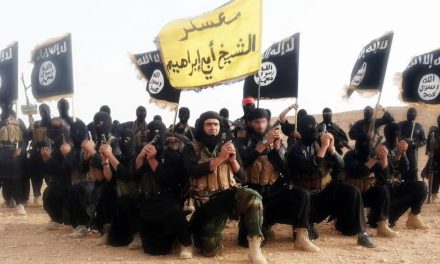In a blanket assault against seven mob families in New York, New Jersey and Rhode Island, the F.B.I. and local authorities began arresting more than 100 people on Thursday on charges including murder, racketeering and extortion, people briefed on the arrests said.
The sweep began before dawn and the targets ranged from small-time book makers and crime-family functionaries to a number of senior mob figures and several corrupt union officials, according to several people briefed on the arrests. Among those arrested or sought, some of the people said, were more than two dozen made members of New York’s five crime families and the families in New Jersey and New England, along with dozens of their associates.
Several of of the men arrested, the people who had been briefed said, were charged with murders — some dating back to the 1980s and 1990s. Others were charged with selections from a full menu of mob crimes: racketeering, extortion, loan-sharking and gambling, as well as labor-racketeering crimes in two sectors that officials say remain under the mob’s sway: the construction industry and the waterfront.
The arrests were based on more than a dozen unrelated indictments handed up in federal courts in four jurisdictions, several of the people said. Taken together, the arrests appeared to be the largest such sweep of organized crime figures ever conducted by federal authorities.
The charges were expected to be announced by Attorney General Eric H. Holder Jr. at a news conference Thursday morning in Brooklyn, where the charges against many of defendants were lodged, the people briefed on the arrests said.
Those who talked about the case did so on the condition of anonymity because the official announcement had not yet been made and because some court papers remained sealed. Most of the arrests were completed by 8 a.m. — a mammoth undertaking involving the F.B.I. and other law enforcement agencies, along with the United States attorneys’ offices in Manhattan, Brooklyn, Newark and Providence, R.I.
The cases were also investigated by the New York Police Department, the New Jersey State Police, the federal Drug Enforcement Administration, the United States. Labor Department’s Office of Labor Racketeering, the Waterfront Commission of New York Harbor and several other agencies.
The decision to announce the arrests in Brooklyn and Mr. Holder’s planned presence at the news conference would seem to underscore the importance of the case to the Justice Department.
The arrests came at a time when several federal, state and local law enforcement officials have expressed some concern about a resurgence of organized crime’s influence in some quarters after two decades of decline.
An impressive string of victories over the mob began in 1991 with the defection of the Luchese family’s acting boss, Alphonse D’Arco, who proved to be a devastating witness. Later that year, Salvatore Gravano, the Gambino family underboss, defected, and his testimony secured the conviction of John J. Gotti.
With the cooperation of those two men, a trickle of significant defections grew into a torrent, weakening the culture of omertà, the Mafia’s code of silence, and thus the foundation of organized crime itself.
The subsequent loosening of the mob’s grip on several industries and unions led to proclamations about the mob’s decline and some refocusing of law enforcement resources. Those resources directed at organized crime were further reduced after the 9/11 attacks.
Prosecutors in Brooklyn and the F.B.I. nonetheless waged a campaign over the last decade that decimated the Bonanno crime family . But the relative health of crime families tends to run in cycles, with some ascendant and some on the decline.
The more-powerful Genovese family, for example, which has found its strength in labor racketeering and construction and some more-sophisticated schemes, remains powerful, as do the Gambino and Luchese families, law enforcement officials have said. .
And in recent years, after the period of some declining focus, officials and union monitors say the mob remains stubbornly entrenched in a number of major construction unions — including locals representing carpenters, concrete workers and operating engineers — as well as on the waterfront.



















